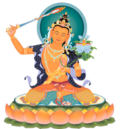Fire, Earth, Air, and Water
The concept of the elements as the basic substance out of which the world is built is extremely ancient.
One’s constitutional type is deduced from the proportion of the elements to each other.
The term “energetics” has many meanings in the world of holistic medicine. I use it in two contexts:
- When the intent is to apply something dynamic to the healing process such as a shift in the relative strength of certain systems of the body, something like a change in metabolism; and
- When the methods used for creating this shift involve the use of specific foods, herbs or herbal combinations, or life style changes that are known to bring about such changes.
Many who have been using acupuncture, acupressure, Ayurveda, and Tibetan medicine in their own health management are probably broadly familiar with what “energy” means, but most patients relying on these forms of traditional medicine depend on the practitioner to bring about the change through use of needles, applied pressure, or teas and tablets whose ingredients are seldom explained. Only occasionally are broad dietary guidelines provided, but since we eat three times a day, what we eat can have more impact on constitutional balance than pills or potions.
Few patients—and in the course of life, we are all at some time or other patients—have acquired the knowledge of how to maintain balance without going to the doctor when they have problems. However, for the last two decades, I have been teaching people how to recognize very early warning symptoms so that they see the imbalances developing before there are any clinically significant symptoms.
The Air Element
The easiest way to explain this is by reference to the air element, called “wind” in Tibetan medicine and “vata” in Ayurveda. If “wind” is just slightly elevated, the individual may experience little more than distraction and minor forgetfulness, hardly the basis of a visit to the doctor. However, when it is understood that if the wind is ignored, it may build in force and begin to disturb sleep or even cause someone to age prematurely, then it is completely clear that adequate management of the early signs of air derangement may prevent a host of very difficult to diagnose and even more difficult to treat complications of years of excess air.
Energetics 101: the Pairs of Opposites
The energetics of the elements are so logical and easy to understand that anyone can get a handle on them in a relatively short time.
For instance, if one understands just the three basic attributes of the air element, i.e., that it is light, dry, and cold, one can immediately see that the opposite of light is heavy, the opposite of dry is moist, and the opposite of cold is warm.
It’s even more interesting than this. If lightness is expressed primarily as lack of density: weight loss, absentmindedness, and vulnerability, then heaviness is not only grounding but it increases the sense of security, stamina, and coping power. It other words, light-heavy is a sort of continuum in which responsiveness to demands in life is a trade off between chaos and organization. On the extreme end of the air spectrum, there is lightning-like perceptivity and curiosity and on the extreme opposite end where there is excess earth, there is not only lack of response to outside stimuli, but usually also resistance to both new ideas and the influence such ideas may have on how life is expressed (and organized.)
Somewhere in the middle, in the blessed middle, there is graceful flexibility, elasticity, and a clear understanding that one has choices and possibilities based on the information and opportunities.
Air-Water Axis
On the air-water axis, moisture is the issue, but even though this is directly related to easy to understand matters such as the percentage of water in the body, weight, swelling and edema, it is also related to viscosity and the ease or lack thereof of movement of the joints. Again, on the one end of the spectrum, there is such dryness that there is creakiness and pain every time a person moves; and on the other end, there is so much swelling that movement requires effort. More importantly, it is this set of polarities that most determines sexual differentiation (and preference), memory, and longevity. We might say that air is androgynous whereas water is the most heterosexual of all the elements. Likewise, air is the eternal youth and water eventually matures from a child to a parent.
Air has quick perceptions but little long-term memory; water retains impressions and so while slower to absorb, it remembers longer. It might therefore be said that air is perceptive and water retentive yet they share the power to recognize associations, it is simply that air energies work more like RAM and water more like your hard drive. So, it is not only memory but senility that is determined on this continuum.
My purpose at this time is not to explain the entire system but rather to show how absolutely logical it is. If one has dry and cracked skin, straight hair that will not hold a wave, hair that easily falls out while shampooing or brushing, one needs moisture to resolve the dryness. However, balance is always going to require some tradeoffs: one cannot have the agility of air and the peacefulness and languid ease of water. One also cannot have the youthfulness of air and the big breasts or hairy chest of water. Remember, it’s always a spectrum, but one can choose to move the lever a little to one end or the other until there is comfort with one’s zone!
[table id=1 /]
